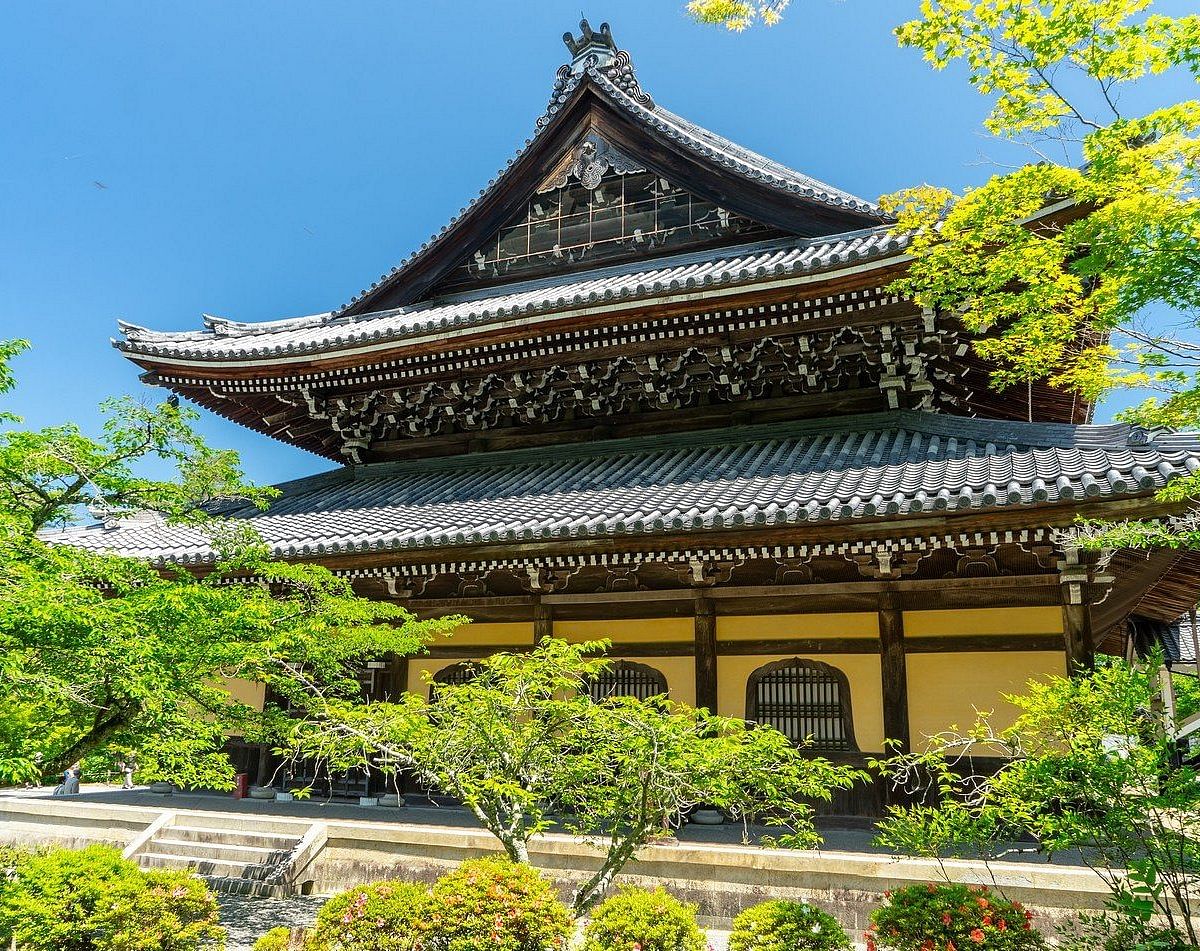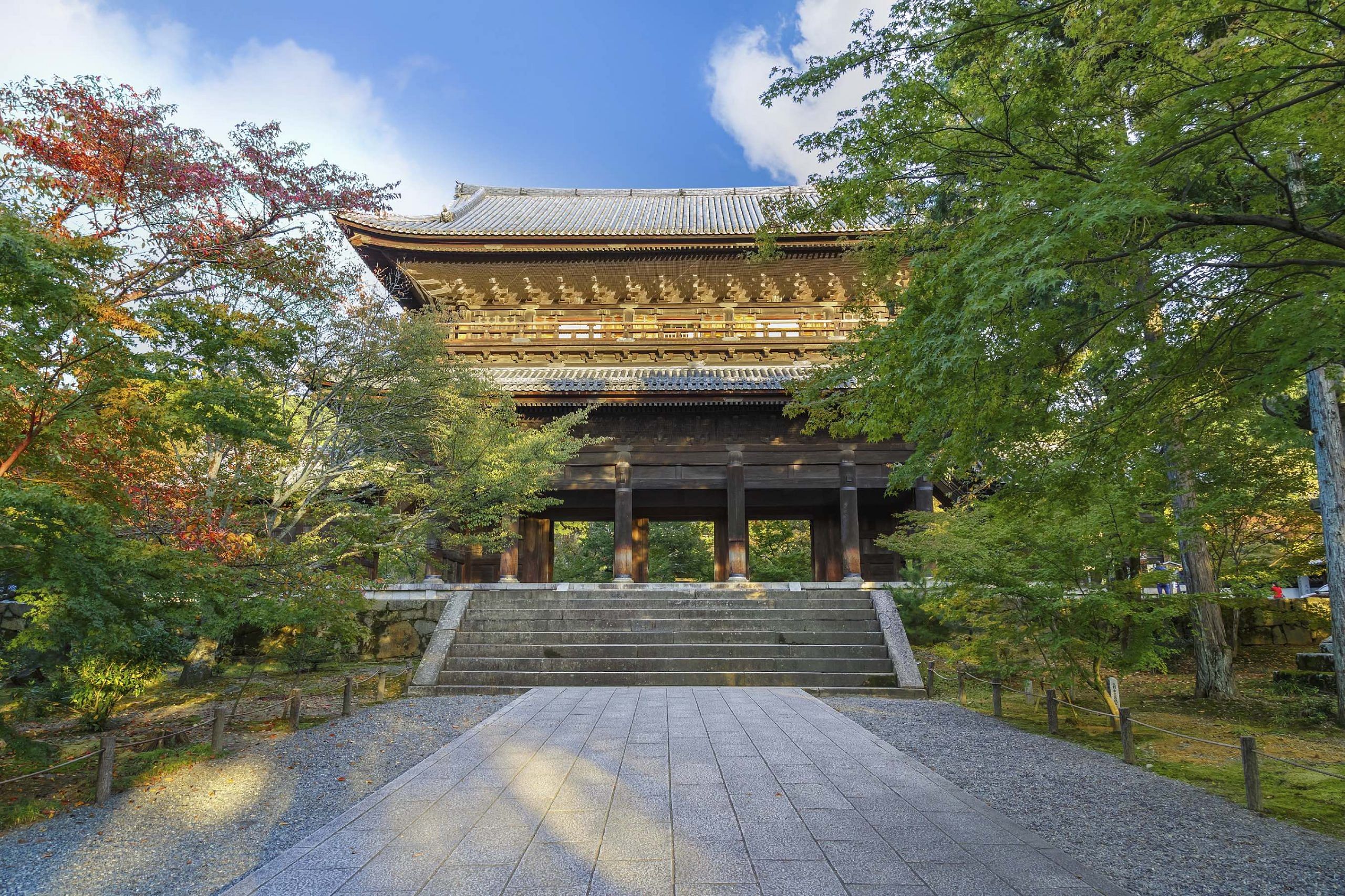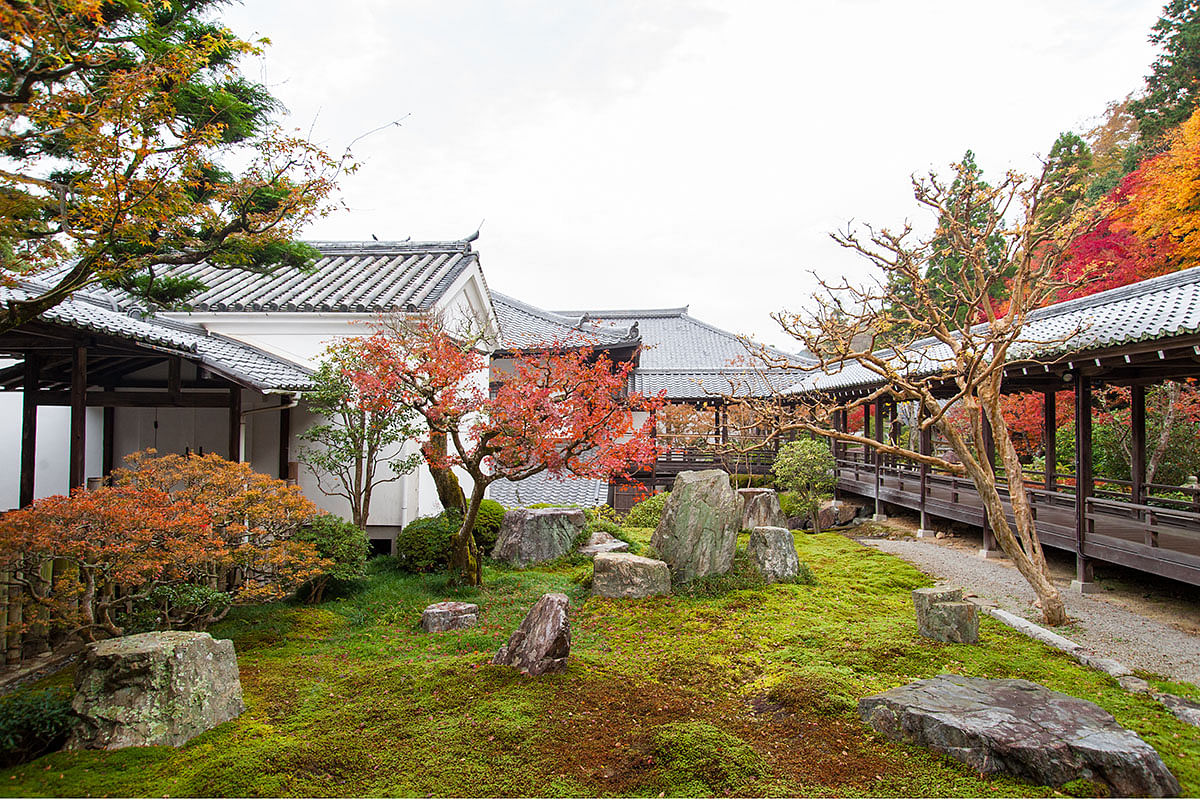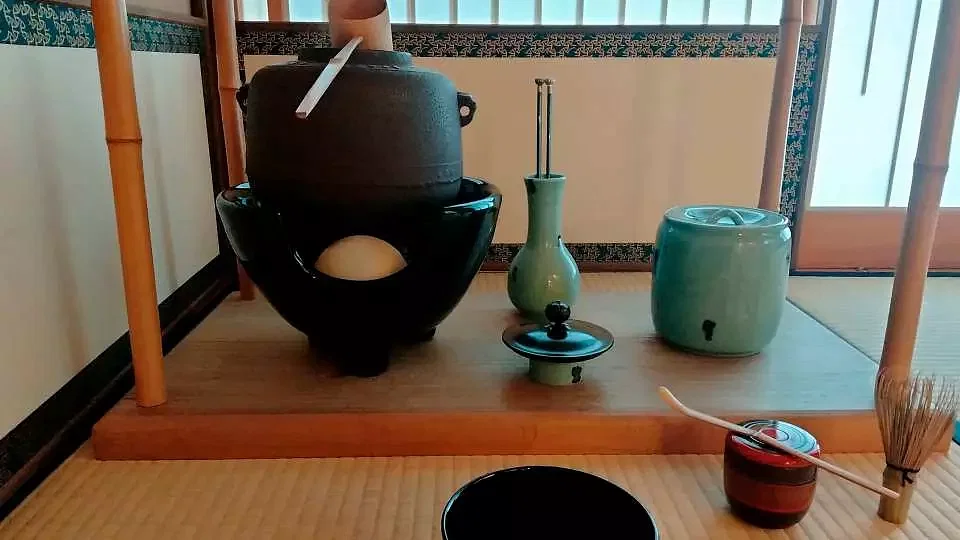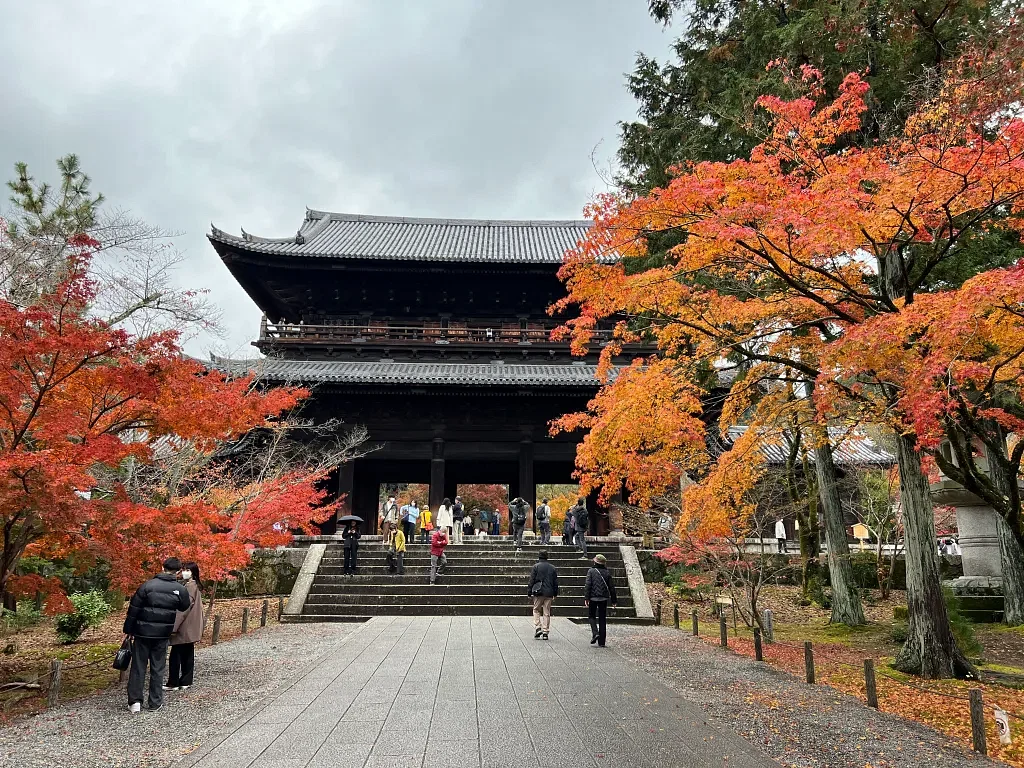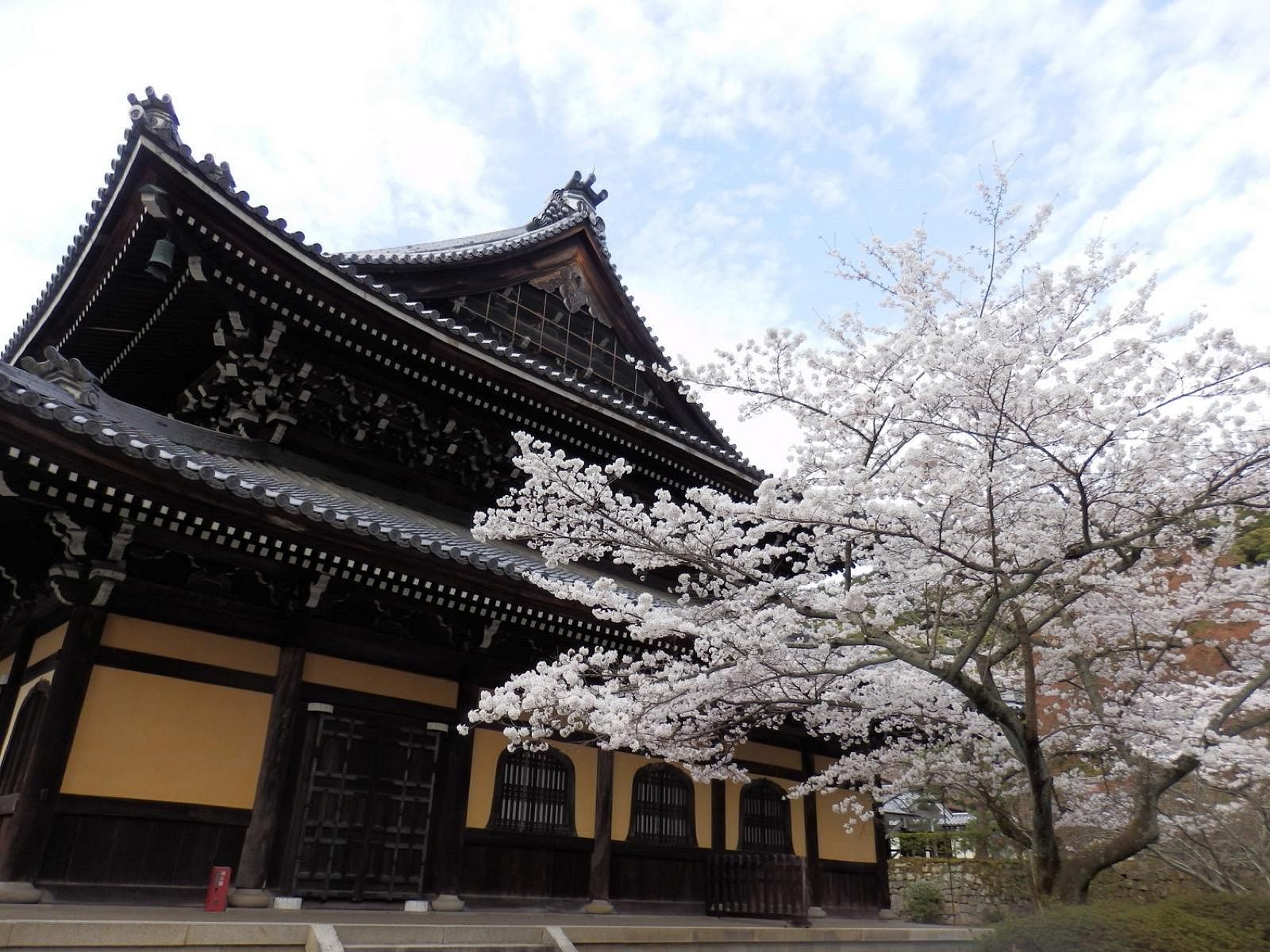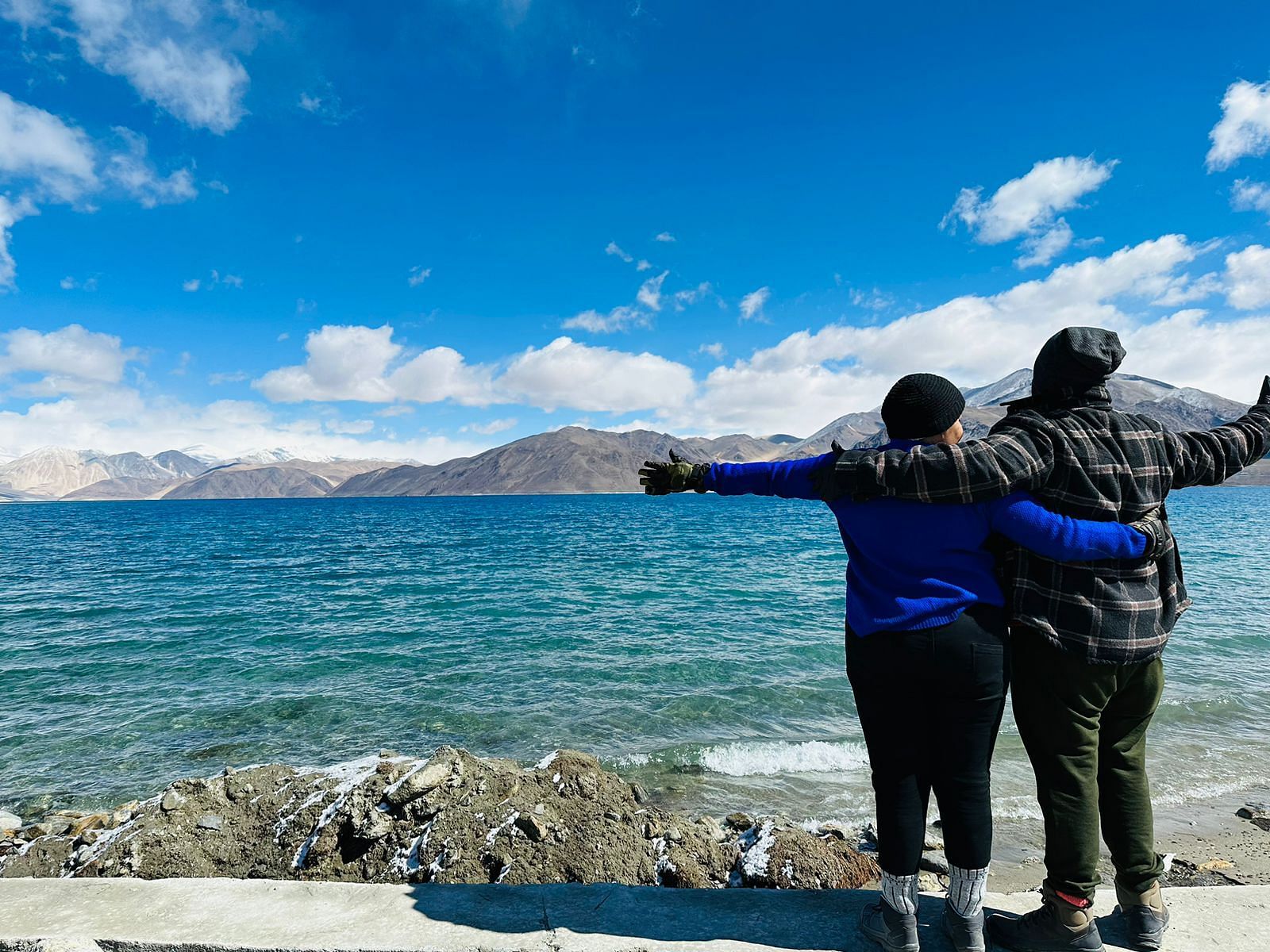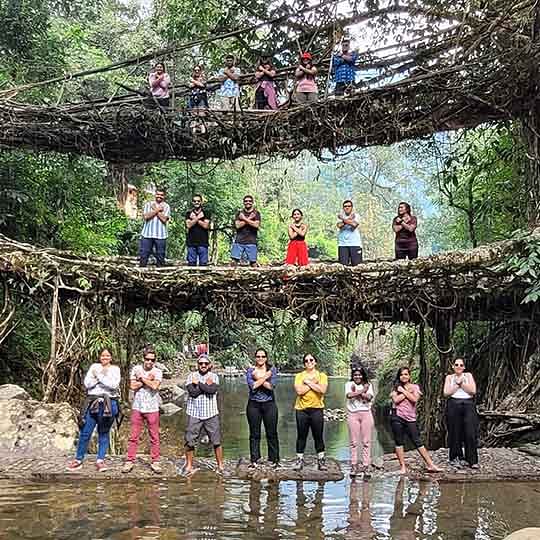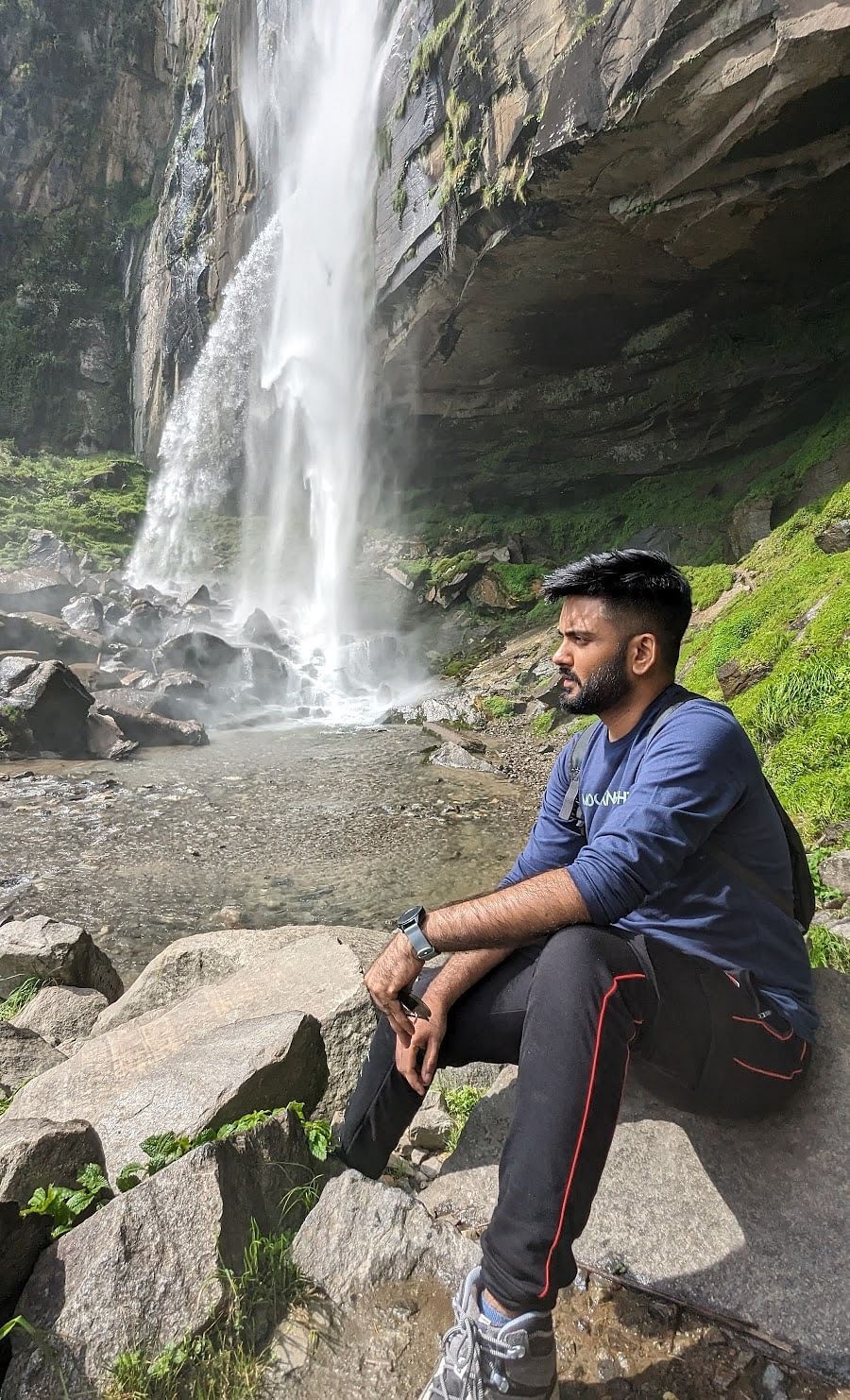Does it pique your curiosity as to what happened when one Japanese emperor got bored of palace doors? He turned his villa into Nanzen-ji Temple, today among the coolest places to visit in Kyoto. It is the best working career change in the 13th century!Walking through Nanzen-ji feels like stepping into old Japan. The temple’s massive entrance gate towers above you, while peaceful rock gardens and autumn maple trees create picture-perfect scenes. Don’t miss the surprising brick aqueduct – it looks like something from ancient Rome but was actually built during Japan’s modernization.
Of all the things to do in Kyoto, exploring Nanzen-ji’s sub-temples and climbing the hillside paths offer a perfect break from the city buzz. Whether you’re admiring the zen gardens or sipping matcha in the temple’s teahouse, Nanzen-ji captures the magic of traditional Japan. Check out our Japan tour packages to include this must-see spot in your Kyoto adventure.
The Rich History of Nanzenji Temple
The Nanzenji Temple’s history goes back to 1291 when Emperor Kameyama built a villa at this location for his retirement. Later, he converted it into a Zen Buddhist temple, giving it its current form and significance. Over the centuries, the temple endured many challenges, including fires and wars, but it was rebuilt every time. Today, Nanzen-ji Temple Kyoto is considered one of the most important Zen temples in Japan. Exploring Nanzen-ji Temple is one of the best things to do in Japan.Walking through the temple grounds, you can see how its history is preserved in the architecture and gardens. From the grand wooden gates to the peaceful spaces, every part of Nanzen-ji Temple tells a story of devotion and art.
Suggested Read: Omoide Yokocho
What to See at Nanzen-ji Temple Kyoto
Nanzen-ji Temple Kyoto is more than just one building; it is a large complex with many attractions. The Sanmon Gate is the first thing you will notice when you enter. Built in 1628, this large wooden structure symbolizes peace and offers stunning views of the city if you climb to the top. Another highlight is the Hojo, the main hall of the temple. The Hojo features a famous Zen garden with carefully arranged rocks and raked gravel. Sitting here allows you to reflect on the simplicity and beauty of nature, which is a core teaching of Zen Buddhism. You might also like to go shopping in Kyoto after your day at this temple.
Nanzen-ji Temple Tea Ceremony
A visit to Nanzen-ji Temple isn’t complete without experiencing a traditional Nanzen-ji Temple tea ceremony. Kyoto is known as the heart of Japanese tea culture, and the tea ceremonies here are held in small, peaceful tea houses within the temple grounds. The tea ceremony is more than just drinking tea—it’s a way to practice mindfulness and appreciate simplicity. Watching the host perform the precise steps of the ceremony is calming and offers a unique insight into Japanese traditions. The Nanzen-ji Temple tea ceremony is a highlight for many visitors and a perfect way to enjoy the quiet surroundings. You might also like to visit Kinkakuji Temple located nearby.
Entrance Fees at Nanzenji Temple
While walking around the temple grounds is free, there is a Nanzenji Temple entrance fee for accessing specific areas like the Sanmon Gate or the Hojo. Typically, the fees are between 215 INR for Junior school students to 325 INR for Adults. Each sub-temple within the complex also has its entrance fee, such as Tenjuan and Nanzen-in. Paying the Nanzenji Temple entrance fee not only allows you to explore these historical spaces but also helps preserve this cultural heritage for future generations. You must also visit Fushimi Inari Taisha Shrine, which is just an hour from Nanzenji Temple.
How to Get to Nanzenji Temple
If you’re wondering how to get to Nanzenji Temple, it’s very convenient and easy to reach. - By Train: Take the Keihan Line to Keage Station. From there, it’s about a 10-minute walk to the temple.
- By Bus: You can take the Kyoto City Bus and get off at the Nanzenji-Eikando-Michi stop, which is just a short walk from the entrance.
- By Taxi: Taxis are another option and are a quick way to reach Nanzen-ji Temple Kyoto, especially if you’re traveling with family or in a group.
- Walking: If you’re exploring nearby attractions like the Philosopher’s Path or Heian Shrine, you can easily reach Nanzen-ji Temple on foot while enjoying the scenic surroundings.
No matter how you choose to travel, how to get to Nanzenji Temple is straightforward and accessible for visitors. You must also visit Nijo Castle located nearby.
Suggested Read: Tsukiji Outer Market
Best Time to Visit Nanzenji Temple
The best time to visit Nanzenji Temple depends on the season and your preferences. Each season brings its beauty to the temple. - Spring: In March and April, cherry blossoms bloom across the temple grounds, creating a magical and romantic atmosphere. This is one of the busiest times to visit.
- Autumn: From late October to November, the autumn leaves turn the temple and its gardens into a colorful sea of red and orange. This is considered the best time to visit Nanzenji Temple for photography and scenic views.
- Winter: Visiting in winter offers a quieter experience. The snow-covered grounds create a quiet and peaceful environment, perfect for reflection.
- Summer: While summer can be hot, the greenery of the temple grounds provides a refreshing escape.
No matter the season, Nanzen-ji Temple Kyoto is always a beautiful place to visit.
A Peaceful Buddhist Temple in Kyoto
As a Buddhist temple in Kyoto, Nanzen-ji Temple holds a special place in the hearts of locals and visitors. Its connection to Zen Buddhism is evident in the calm and peaceful atmosphere that surrounds the temple. Many visitors come here to meditate, reflect, or simply enjoy the peaceful gardens. The Nanzenji Temple’s history is closely tied to the development of Buddhism in Japan, making it a significant cultural and spiritual site. Do visit the Kiyomizu-Dera Temple nearby.
Suggested Read: Shinjuku Gyoen National Garden
Other Attractions at Nanzen-ji Temple
- The Aqueduct: A surprising feature of Nanzen-ji Temple Kyoto is the red brick aqueduct that runs through its grounds. Built during the Meiji period, it is a striking contrast to the traditional wooden structures and a popular spot for photos.
- Sub-Temples: The main complex is surrounded by smaller sub-temples, such as Tenjuan and Nanzen-in. Each has its own beauty, with unique gardens and architecture.
- Sanmon Gate View: Climbing the Sanmon Gate for beautiful views of Kyoto is a memorable experience, especially during cherry blossom or autumn leaf seasons.
Tips for Visiting Nanzen-ji Temple
- Arrive Early: To enjoy the peaceful atmosphere and avoid crowds, visit early in the morning.
- Wear Comfortable Shoes: The temple grounds are large, and there’s a lot of walking involved.
- Respect the Culture: This is a sacred place, so be mindful of your behavior and follow any photography rules.
- Carry Cash: You’ll need cash to pay the Nanzenji Temple entrance fee for various areas.
Suggested Read: Shopping in Tokyo
Nanzen-ji Temple is a jewel in Kyoto’s cultural and historical landscape. Whether you’re interested in the Nanzenji Temple’s history, eager to participate in a Nanzen-ji Temple tea ceremony, or simply want to admire the beautiful Zen gardens, this temple has something for everyone. The small Nanzenji Temple entrance fee allows you to explore its many treasures, and its easy accessibility (as described in the section on how to get to Nanzenji Temple) makes it a convenient stop on any Kyoto itinerary. The best time to visit Nanzenji Temple depends on your favorite season, but no matter when you go, you’re sure to be captivated by its beauty and serenity.
This Buddhist temple in Kyoto offers a unique blend of spirituality, history, and natural beauty, making it an unmissable destination for travelers.




